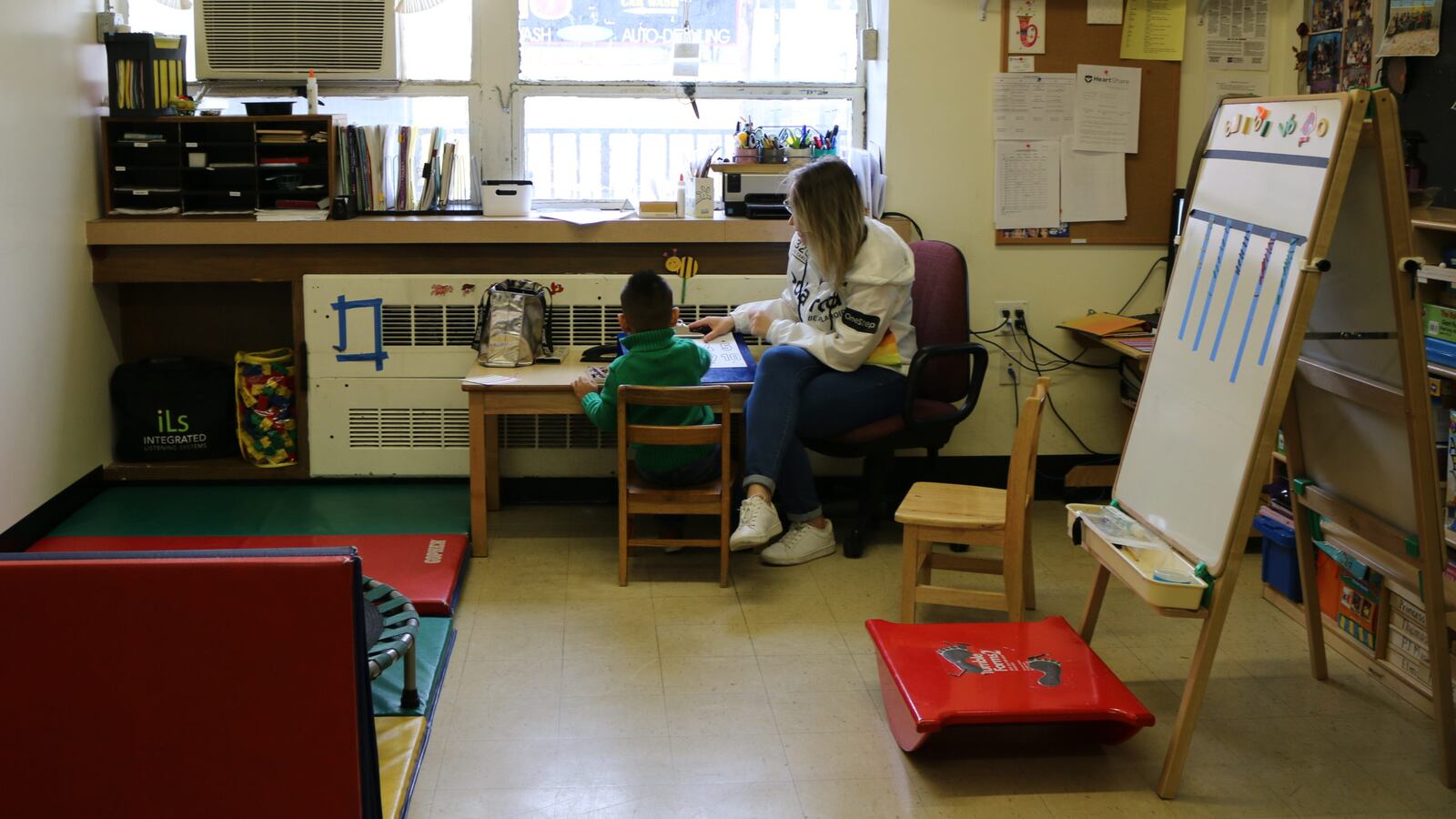New York City’s first coronavirus-connected school closures have hit students with disabilities particularly hard.
On Wednesday, a Harlem charter school program for students with disabilities closed. Thursday saw two Bronx schools that serve significant numbers of students with disabilities close their doors for a day. And on Friday, a District 75 program in Brooklyn shuttered as well.
For now, the rest of New York City’s schools remain open. But if that changes, it will pose particular challenges for the city’s more than 220,000 students with disabilities, many of whom rely on schools for crucial therapies like speech and often find comfort in classroom routines and relationships.
Advocates say it’s time to begin planning to reduce the impact on students.
It starts with communication, said Lori Podvesker, director of disability and education policy at INCLUDEnyc, an advocacy organization. She’s also a mom to a son with disabilities. Podvesker recommended parents talk with teachers ahead of a possible closure to come up with a plan specific to their child.
“It would be very beneficial to get in communication now about things to consider,” she said.
Schools might want to start preparing students for what it would mean to cancel classes. Podvesker recommended using social stories, which include visuals to explain what to expect in unfamiliar situations.
“Many of our kids are routinized,” she said. “Knowing what their day looks like and knowing the schedule is very helpful — with visuals.”
Schools that close their doors due to coronavirus but continue “remote” learning are required to make sure that instruction is accessible to students with disabilities, the federal education department made clear on Thursday. Students must also receive their required special education or medical services “to the greatest extent possible.”
If schools shut down entirely, they are not required to provide services during the closure. In either case, parents and caregivers will face additional challenges.
Podvesker called on schools to provide guidance for families on how to address academic, behavior, sensory, and other issues that might crop up while students are at home. That should be coupled with concrete strategies for making sure that students don’t lose ground while they’re not at school. For students with certain disabilities, tips might include allowing children to chew gum to stimulate their mouth, or making sure they move a heavy object around a room multiple times a day so they don’t lose muscle strength.
For parents, Podvesker recommended taking a survey of who might be available to help with childcare. Those who are employed should check in with their bosses to explain how a closure might affect their work responsibilities. And those who can’t take time off or might need help paying for childcare should start getting in touch with social service organizations now.
Rose Fox, a Crown Heights parent of a preschooler with disabilities, said the city should try to proactively connect families with providers so children can continue to receive services like speech therapy, occupational therapy, or physical therapy.
“Coordinating all of this would be huge,” Fox said. “But it is our child’s civil right to receive these services.”
That would be an especially steep climb for New York City, since many children already go without required services, and parents often have a hard time finding providers in their community. Podvesker said it might be more realistic for the education department to come up with a plan to make up any therapies students may miss during a closure.
At Pathways, one of the affected programs in Harlem, some learning has shifted online using recorded lessons and tools like Google Classroom, according to a spokeswoman. The program is part of the Democracy Prep charter network, which is closing all its New York schools and shifting to remote learning through at least April 19.
But that’s not possible everywhere. Teacher Danielle Felicissimo said closures would be particularly challenging at her school, which is part of District 75, a citywide network of programs that serve students with more complex disabilities.
Virtually every student at her Bronx high school comes from a low-income family and many have intellectual disabilities, autism, or other medical conditions. Many students receive speech, occupational, and physical therapy in addition to counseling and have one-on-one aides who help them stay on task throughout the day. That support would likely evaporate in the event that her school closed.
“Remote learning is not going to work with our population,” Felicissimo said, noting many classes are highly structured and involve hands-on activities. “It’s going to be really hard for our parents.”
If schools with a special education focus are required to close, she suggested caregivers maintain school rhythms as much as possible for students, including having them wake up on time. “Have a routine. It will help ease the transition,” she said. It’s also important for students to maintain some level of physical activity, as long as it’s not in a crowded setting.
Another suggestion: Don’t shy away from conversations about what’s going on.
She has already deployed lessons on hand washing in her classroom and has turned questions around to students when they express anxiety about what’s happening, prompting discussion about proper hygiene instead of dwelling on the dangers.
“If they come up with it, then they can take ownership,” she said. “When you feel like you’re taking an action, you feel like you have some measure of control.”
This article answers questions raised by our readers. Share your coronavirus-related questions, concerns, and ideas below, and keep up with our reporting on COVID-19 here.

